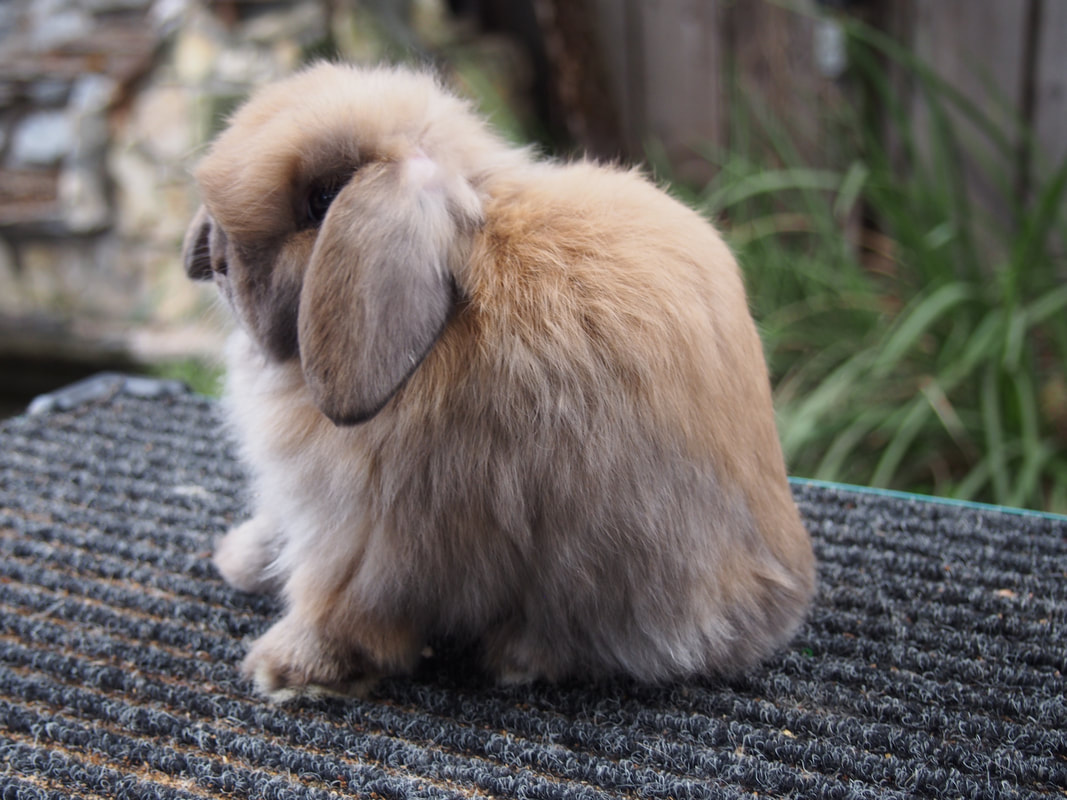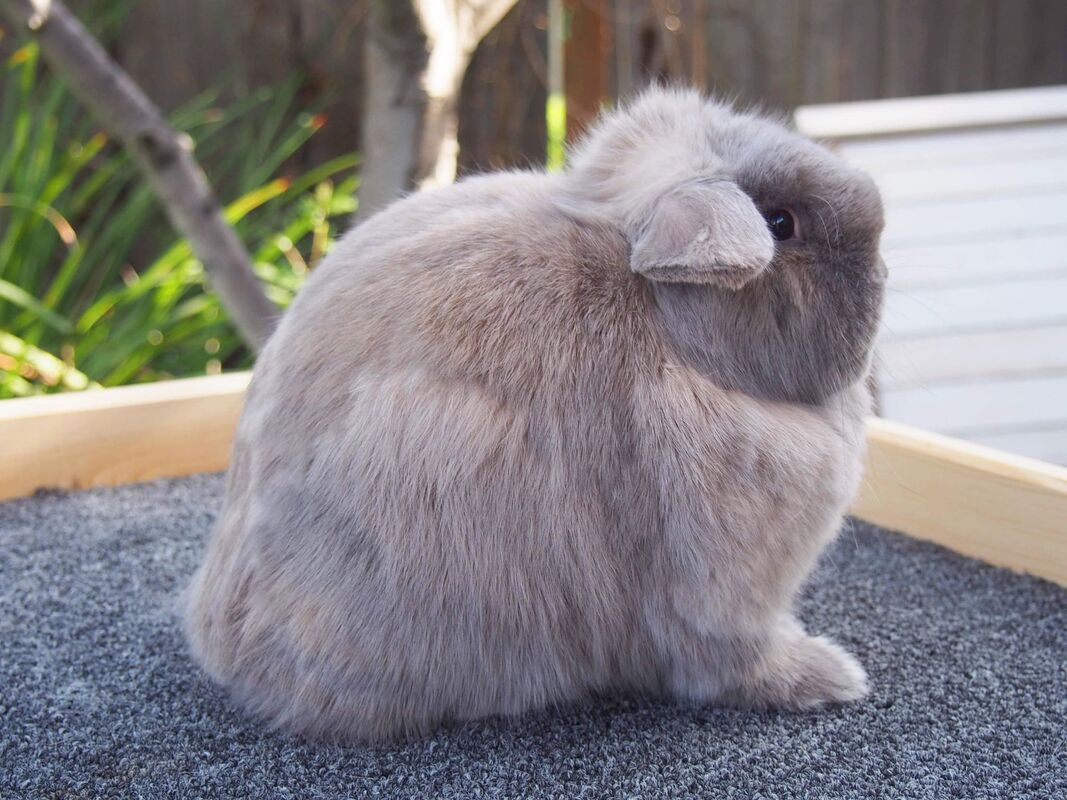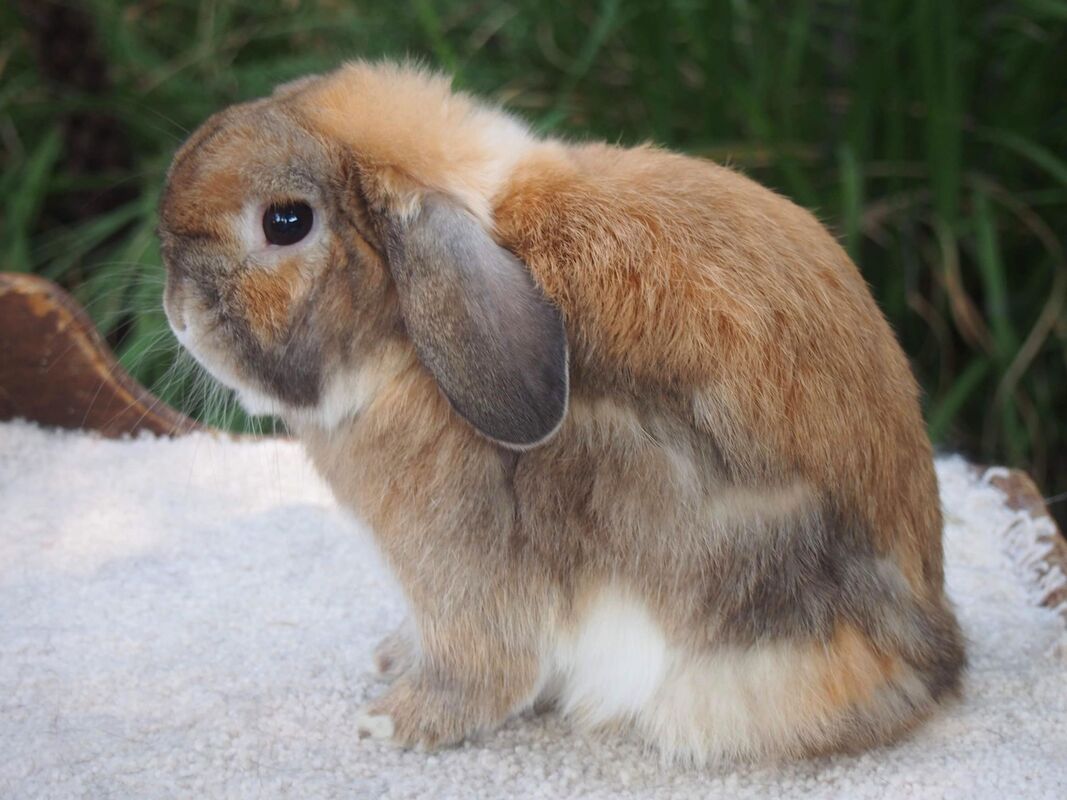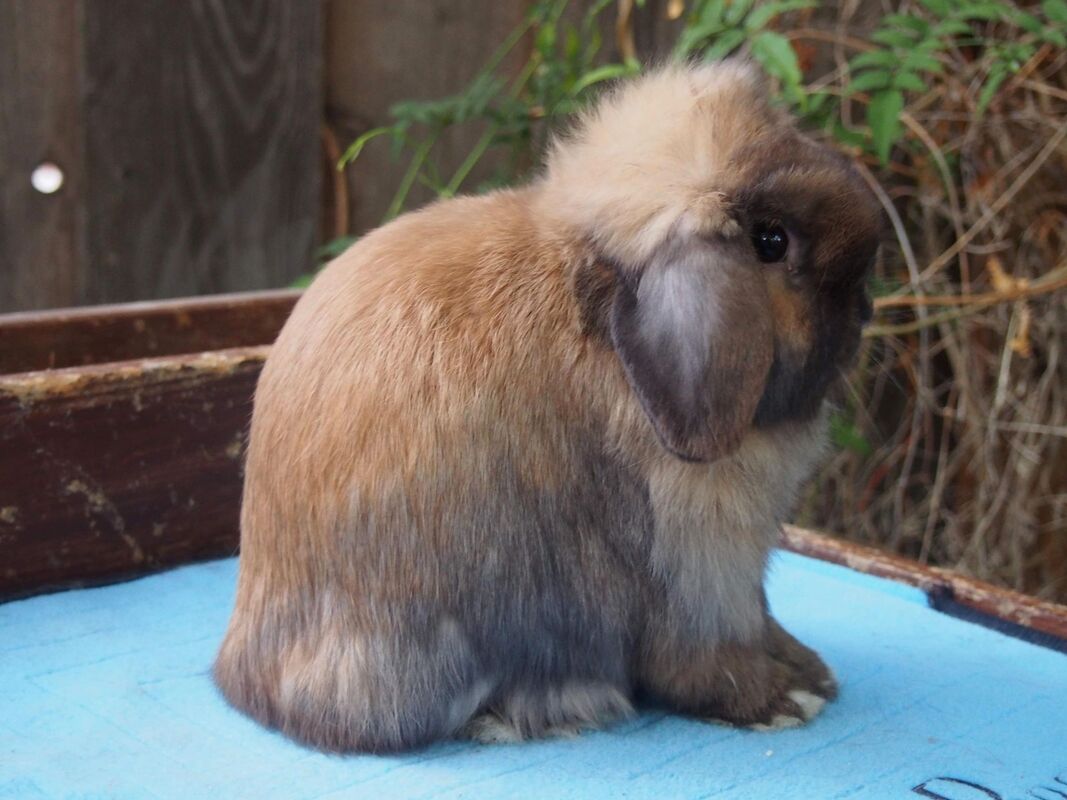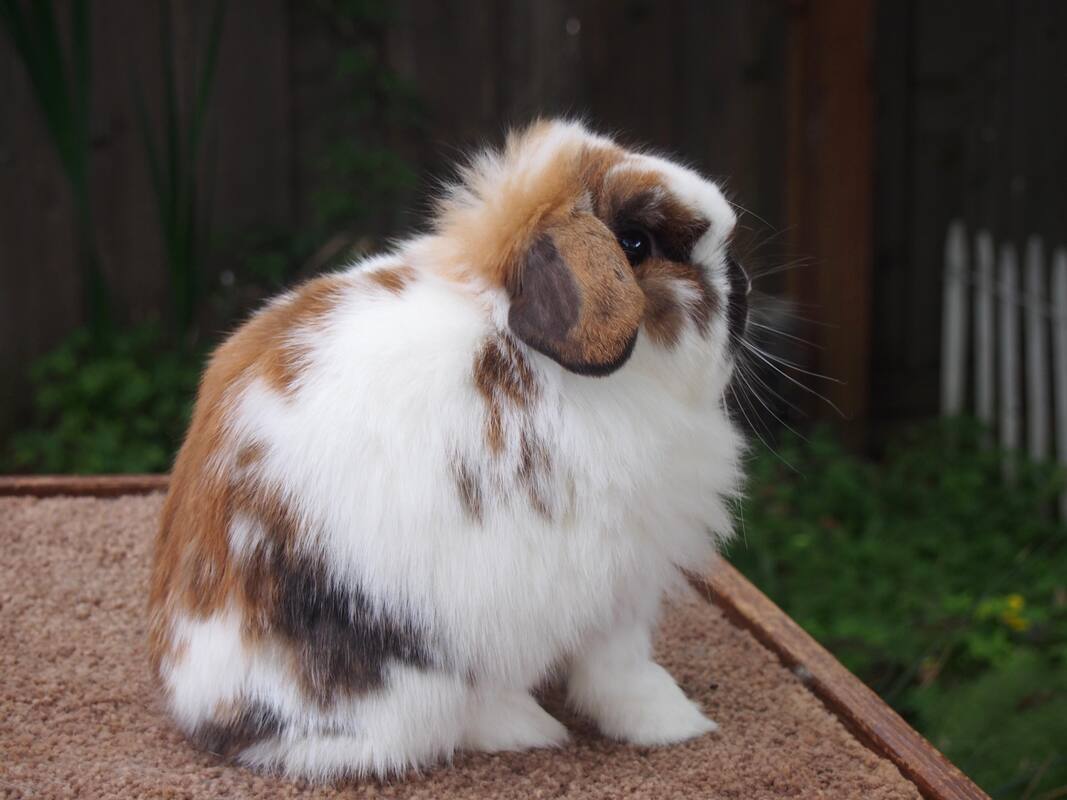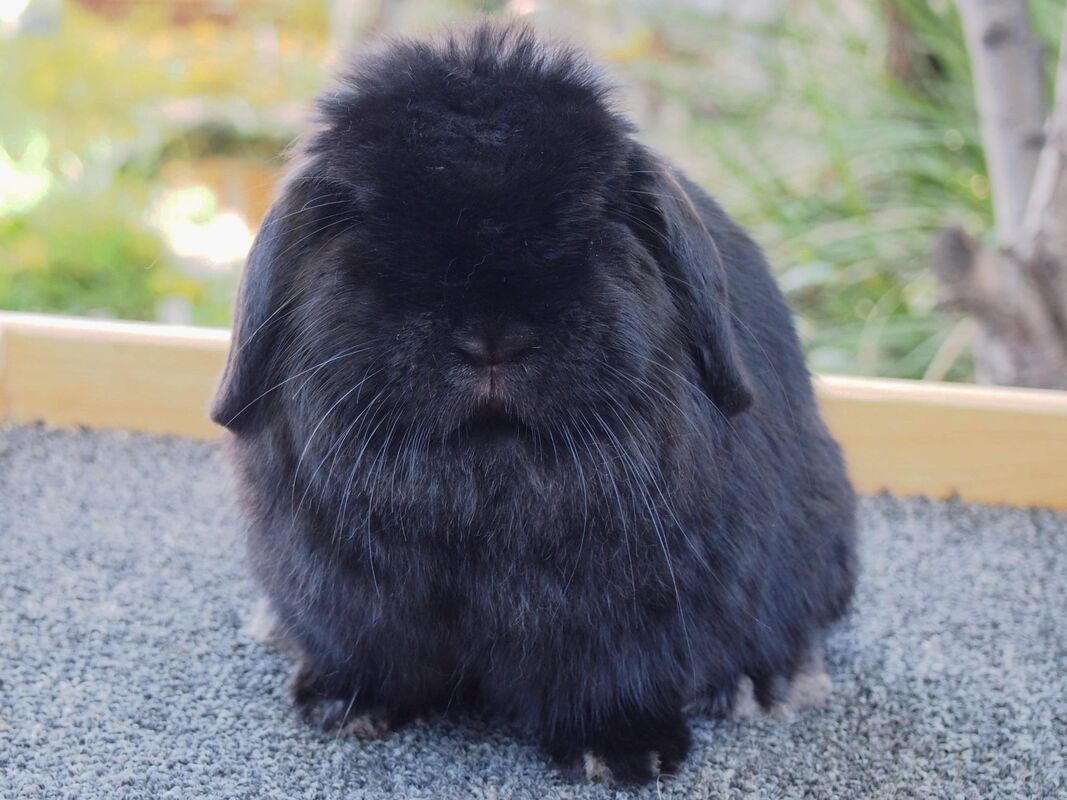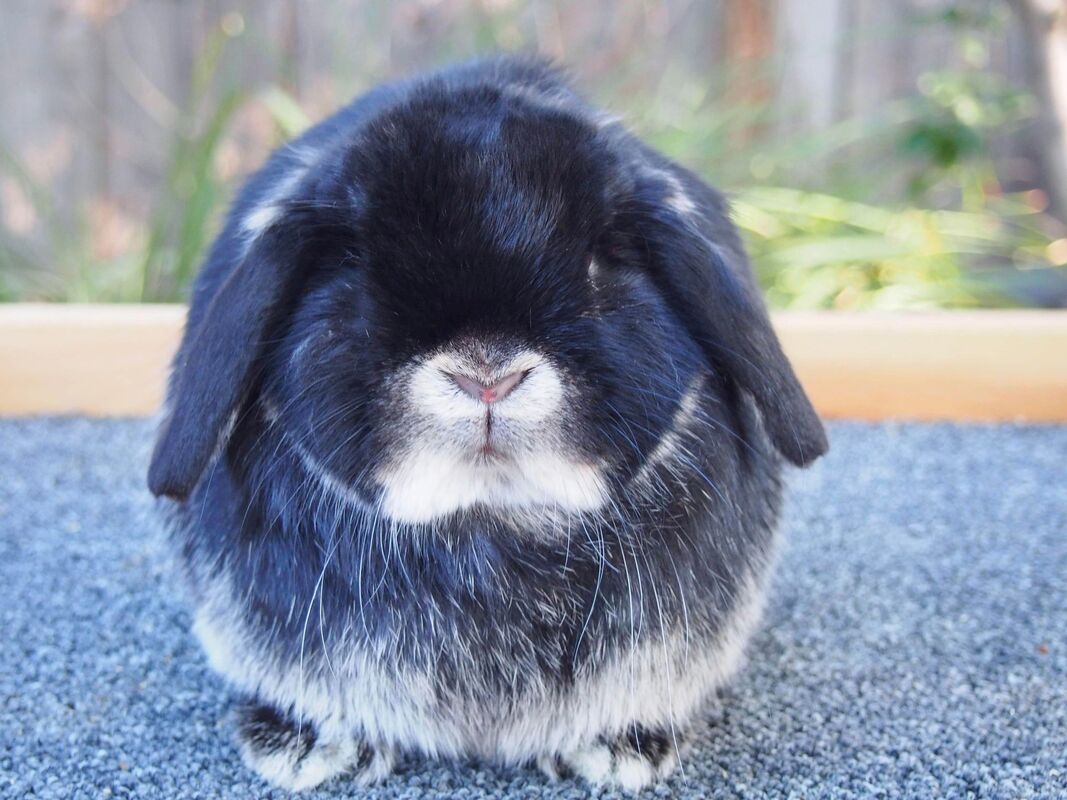This article is all about Holland bodies! Per the Holland Lop breed standard, the body is worth 32 points - so almost a third of what the rabbit will be judged on! As such, it's absolutely critical to have a solid understanding of what a Holland's body should and should not look like. It's easy to look at a picture of a beautiful Holland online and see that it's a quality animal. Equally, it's easy to look at a picture of a poor quality Holland and see that it looks bad. However, the key is to have a solid understanding of WHY they look different, and what specific traits make it that way. Hopefully this article will help in that respect!
First, let's talk about shoulders. I go into more depth on this topic in another article, but I'll touch on it here too. When looking at the tort on the left, the shoulder is short and deep. She appears tall. This means her topline starts right at the nape of the neck, without any rise. The fox buck on the right has extra length through his shoulder. Imagine 'chopping off' an inch or two over his shoulder and putting him back together. He would look more like the tort doe on the left.
Next is the midsection. The midsection is the middle of the body, in between the shoulders and hindquarters. There are varying schools of thought with midsection, but I essentially shoot for as short of a midsection as possible. It is still absolutely possible to have correct depth of hindquarter without excess midsection length, but that's a story for another time. The tort doe on the left is extremely short in her midsection, yet maintains correct depth of hindquarter (more on this later). The broken tort doe on the right has midsection length. Notice how the center of her back seems to have 'too much' spine. If you are still having trouble determining whether your rabbits have long midsections, allow them to move freely on a table and observe them at eye level. If your rabbit has a long back, and a long distance between their front and rear feet, then they have midsection length.
A lot of people will over-pose their rabbits that have long midsections in order to 'meld' them into a good looking pose. Try to avoid doing this as it will only damage the quality in your herd in the long run. Not being honest with yourself about your rabbits' true type will not get you anywhere.
A lot of people will over-pose their rabbits that have long midsections in order to 'meld' them into a good looking pose. Try to avoid doing this as it will only damage the quality in your herd in the long run. Not being honest with yourself about your rabbits' true type will not get you anywhere.
Next, let's talk about sloping. While this can be caused by a few different factors, common reasons may include length in the midsection or a shallow loin. If we look at the black tort doe on the left, she is short in her midsection and has a tight turn over her loin, with fairly equal depth over her shoulder and hindquarter. The blue tort doe on the right slopes due to some length in her midsection and a flatter loin.
Let's talk about another topline fault: angularity. When looking at the side profile of a Holland, the line that the spine makes should be a smooth curve without any flattened areas of the spine. If there are one or more areas in the topline with these flat spots, then we could say the rabbit has an 'angular topline'. The tort doe on the left has a super smooth topline without a single flat spot. The fox buck on the right has multiple flat spots over his back, and is therefore considered angular. He is also overposed.
Next let's talk about pinched hindquarters. This is best observed with the animal posed in person (I'm not a huge fan of the flipping-over trick and feel it is often inaccurate). Feel down its back and see if the hindquarter feels like it chops off or narrows toward the base. Another big telltale sign of a pinched hindquarter is when the rabbit has a strong inclination to thrust its rear feet forward when it poses. The black otter doe on the left has a wide lower hindquarter, and lacks pinching. The broken black fox doe on the right has a slight pinch. If you look closely at the picture, you can see that she narrows toward the very base of her hindquarter, and thrusts her rear foot forward. It's not an extreme pinch by any means, and she never had any issues kindling litters of up to 8 babies for me, but it's still there and should be faulted.
Next up: undercut hindquarters. Undercut means that the hindquarter tucks inward toward the base, rather than flowing smoothly to the table. The solid tort buck on the left has a correct hindquarter. His topline ends flat or with a slight ruffle at the base. The broken tort doe on the right has an undercut hindquarter. If you look closely, you can see how the topline tucks inward toward the base of the hindquarter rather than flowing downward or slightly out. This is incorrect.
A 'skirt' is not evidence of a correct hindquarter. It is simply loose flesh and fur and can be coupled with either a correct lower hindquarter or an incorrect one. I'm generally not a fan of prominent skirts as the rabbit will often have poor flesh condition.
A 'skirt' is not evidence of a correct hindquarter. It is simply loose flesh and fur and can be coupled with either a correct lower hindquarter or an incorrect one. I'm generally not a fan of prominent skirts as the rabbit will often have poor flesh condition.
The next trait we're going to look at is depth over the hindquarter. Just like a Holland should have a deep shoulder, as observed in the first example in this article, they should also carry good depth over the hindquarter. Per the standard, the depth at the hindquarter should equal that of the shoulder. The tort doe on the left has excellent depth of hindquarter. Her depth of hindquarter is the same as her depth of shoulder, and she turns smoothly over the hip before her topline falls in a curve over her hindquarter. The tort buck on the right does have good depth over the shoulder, but his topline falls too low over the hindquarter rather than carrying the depth further back.
We've talked quite a bit about shortness and depth of body, so now we're going to take a look at the depth to width balance. A Holland should be equal parts short, deep, and wide, which is what we would call 'balanced.' The rabbit on the left has a good balance of depth and width of chest. The rabbit in the middle has good depth, but lacks width. The rabbit on the right has good width, but lacks depth.
A good analogy for depth to width ratio is to imagine a rabbit as a piece of clay. If you want to make a deep piece of clay, you push the sides in, which makes the clay more narrow. If you want to make a wide piece of clay, you squash it down and make it flat. The same is often true of rabbits. Deep rabbits have a tendency to be narrow, and wide rabbits tend to be flat and lack depth. Getting the best of both worlds is a challenge!
Interestingly, when evaluating rabbits, there is a weird visual trick that often happens, especially if you're not aware of it. That trick is that we tend to perceive rabbits that are wider than they are deep to be balanced, while we tend to perceive rabbits that are equally deep and wide as being too narrow. However, if you get out a ruler and actually measure the animal in person, you may be surprised how many rabbits lack depth to balance their width! It's a weird visual trick and I'm not entirely sure on the scientific reason why. At the end of the day, this is one of the reasons why it is relatively common to see Hollands that are wide and flat. Many of us are great at seeing width, but really struggle to see depth!
A good analogy for depth to width ratio is to imagine a rabbit as a piece of clay. If you want to make a deep piece of clay, you push the sides in, which makes the clay more narrow. If you want to make a wide piece of clay, you squash it down and make it flat. The same is often true of rabbits. Deep rabbits have a tendency to be narrow, and wide rabbits tend to be flat and lack depth. Getting the best of both worlds is a challenge!
Interestingly, when evaluating rabbits, there is a weird visual trick that often happens, especially if you're not aware of it. That trick is that we tend to perceive rabbits that are wider than they are deep to be balanced, while we tend to perceive rabbits that are equally deep and wide as being too narrow. However, if you get out a ruler and actually measure the animal in person, you may be surprised how many rabbits lack depth to balance their width! It's a weird visual trick and I'm not entirely sure on the scientific reason why. At the end of the day, this is one of the reasons why it is relatively common to see Hollands that are wide and flat. Many of us are great at seeing width, but really struggle to see depth!
The buck on the left demonstrates excellent depth of body. He appears 'tall.' The doe on the right might have good width of body, but she lacks a lot of depth compared to the buck on the left, who is considerably more balanced.
The traits discussed above are some of the most important to consider when evaluating a Holland's body. Please note this is only the 'Cliff Notes' version and that evaluating body goes far beyond a few photos and key points. Regardless, I hope you found this article helpful!
The traits discussed above are some of the most important to consider when evaluating a Holland's body. Please note this is only the 'Cliff Notes' version and that evaluating body goes far beyond a few photos and key points. Regardless, I hope you found this article helpful!


